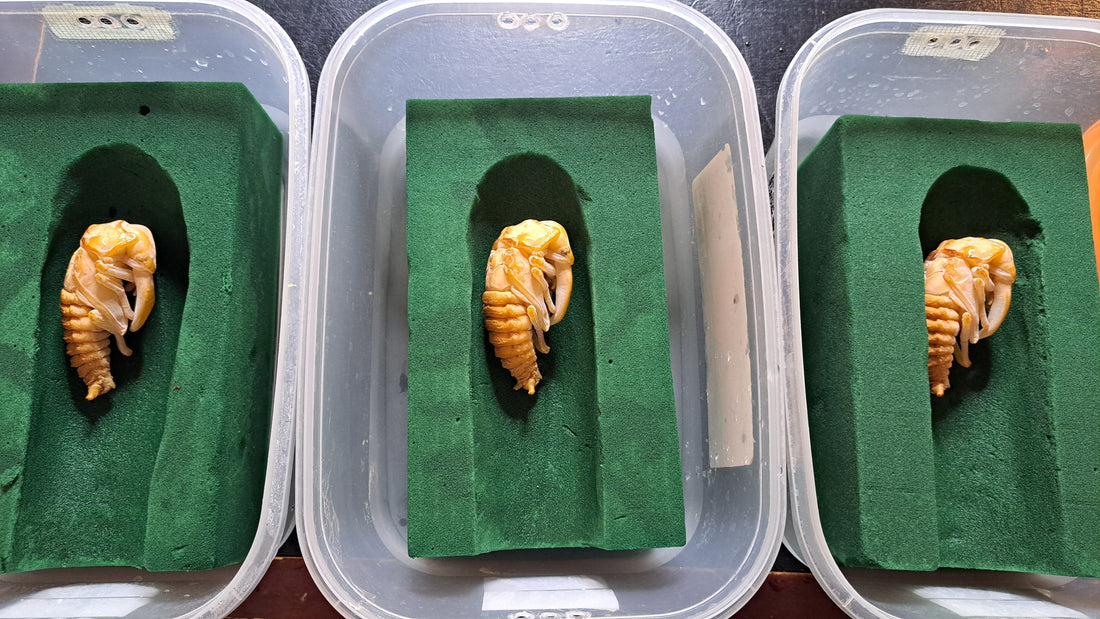🚩 How to Make an Artificial Pupal Chamber Using Oasis Foam
When it comes time for pupation, giving your beetles a proper space to transform is critical.
I usually use Oasis floral foam blocks to create artificial pupal chambers that closely mimic natural conditions.
This method helps prevent pupation and emergence failure, which is common when pupae form directly in substrate.
Making a chamber is pretty simple, and you can use a few tools depending on your preference:
• A spoon
• A pupal chamber stamp
• A pupal chamber cutter

⚠️ Only move the larva after it has entered the prepupal stage, meaning it’s no longer using its legs or jaws, or after it has fully pupated. 📏 Size Reference:
📏 Size Reference:
The inner width of the artificial chamber should be about 1.3–1.5× the width of the pupa for proper space and stability.
🔧 Methods for Shaping the Chamber: • Using a Spoon:
• Using a Spoon:
Carefully carve the cavity to match the pupa’s size and shape.
This is the most common and accessible method for most keepers. • Using a Pupal Chamber Stamp:
• Using a Pupal Chamber Stamp:
A faster and more uniform method if you have multiple pupae to prepare for. • Using a Chamber Cutter:
• Using a Chamber Cutter:
Offers a very precise shape and is especially useful for larger species or for breeding at scale.
✅ For Rhino Beetles:
 Rhino beetles tend to build their chambers at an incline of about 20–25°.
Rhino beetles tend to build their chambers at an incline of about 20–25°.
• View from above:
• Cross-section view: 
✅ For Stag Beetles:
Stag beetles tend to build their chambers at a shallower incline of about 10–15°.
• View from above:
• Cross-section view:
 📌 If your artificial pupal chamber ends up too flat, try propping up the oasis with small objects underneath to get a better angle.
📌 If your artificial pupal chamber ends up too flat, try propping up the oasis with small objects underneath to get a better angle.




